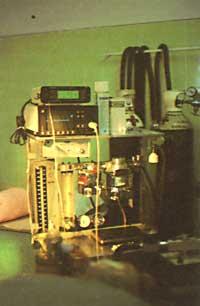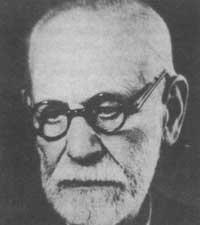Bioenergy analysis
1991/10/01 Etxeberria, E. Iturria: Elhuyar aldizkaria
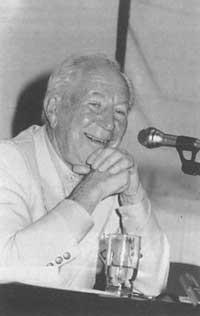
Many of you, newly arrived on vacation, believe that these days you will find yourself calm and without stress. However, in the following lines, we will talk about something that can help in stressful and serious moments.
What is bioenergy analysis? To clarify this, we present the words of Alexander Lowen, an analyst who has addressed this topic. ...” Bioenergy analysis is a way of understanding human identity taking into account the body and its energy processes. The production of energy through breathing and metabolism and the discharge of energy into motion are the basic functions of life.
Bioenergy analysis is also a therapy that helps people solve their emotional problems by working with the body and mind and helps them to better understand the potential for pleasure and enjoyment to live...”
It should be noted that in the first months of this year in San Sebastián, Pamplona and Bilbao we had the opportunity to hear interesting talks on this topic and to maintain a conversation with one of the organizers.
We asked one of the organizers, Maite Zumalde.
SDG: Where does bioenergy analysis come from?
M: M: Well, before saying anything about bioenergy analysis I think I would have to say something about Freud. Freud was a doctor and worked a lot on the body. His curiosity was based there. There the mind was based to know what happened with mental hysteria, what happened with neurosis. Well, he started to work analyzing hysteria. At that time this disease was very related to paralysis, people were paralyzed and did not know where the paralysis was coming from. Logically, this has to do with what happens in the body, with the functioning of the body. There Freud was based a little to analyze what was happening in the psyche and intelligence. This bioenergetic analysis has, therefore, a great base in Freud.
SDG: Can we say that the Bioenergy Analysis started from there, has its base?
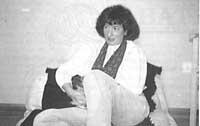
M: M: Yes, that's right, but Freud himself was not so interested in working with something related to the body.
SDG: That abandoned him...
M: M: Yes, maybe… because a person can't do everything in this world. And he was directly linked to the psyche. Then, after many years... Reich appeared and this resumed the subject of the body. The concept of character was one of the most used by him, which had its beginning in Freud. Alexander Lowen was based on Reich and is the creator of bionergic analysis.
SDG: How did Low's bionergic analysis begin to work?
M: M: He is an American, he taught gymnastics (the body was therefore the axis of his work) and began to be interested in the connection between body and intelligence. He was one of the patients of Reich. He then studied medicine in Europe. We could say, therefore, that his base is also in medicine, and that bodily diseases, difficulties… he related them to energy… he said that in the body there are different segments and also tension. A person has tensions (we all know what tensions are, don't we? ; when we have leg pain or back or lumbago pain or... headache or...) he associated all of this with some blockade.
SDG: With the energy blockade?
M: M: Yes, with energy blockade. But if something hurts us today, it is not directly discussed in bioenergy analysis, it is also taken into account, but more than that chronic tensions are treated. Lowen bases his theory on chronic tensions, it seems that from the moment the child is born he begins to form a kind of being in that child, which occurs through his mental representations and from there a certain structure would be formed in his body.
SDG: What does it mean to create a certain structure?
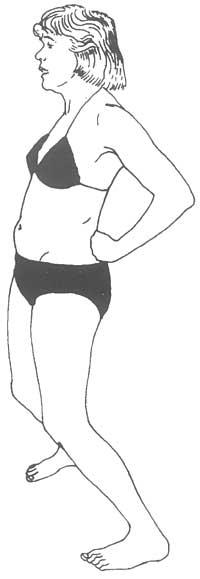
M: M: Yes, that is, to form a type of body. Based on the relational world, creating a certain structure means forming a type of body through mental representations. There it has a huge psychoanalytic base, because psychoanalysis is also based on it. In other words, taking into account the type of relationship he has with his parents, with his own... from the moment the child is born, right? And Lowen, a little later, says that this behavior is reflected in the body forming a certain type of body. In his book Body Language (Body Language) he speaks a lot about this topic.
SDG: He has said he was also a doctor, right?
M: M: Yes, he is a doctor, but since then he studied medicine, when he started as a patient, in 1952 approximately. We are talking about something very new. It is something very new and… there are many debates. Last year, for example, there was a big debate on the basis of bioenergy analysis. There are a lot of Europeans. On the other hand, there are many Americans and among Europeans the psychoanalytic trend is much stronger than among Americans.
Lowen himself, eighty and tall, has a great facility to “read” the body. In Europe they are much more mental, because historically the psychoanalytic aspect is there and… as I said, there was a great debate and a congress was held called Back to bases (Back to the Bases), in which one of the points that stood out was that the body with its muscular shell, tension and structure cannot be abandoned at all.
SDG: In relation to the foregoing, Reich and Lowen and these, starting from the theory of Freud, “incorporate” the body, do not separate the body from the intelligence, somehow take the person entirely, do they?
M: M: Yes, psycho and soma, they are basic concepts. The structure of the person as a whole is taken into account. For example, the general or rigid structure, all people have a concrete structure. What does one and the other mean? For example, orality means that it has very little strength, very little energy. There is something that is not a matter of will, which is very related to the unconscious and way of functioning of the person, his neurosis, his way of being... is very related to that.
SDG: What method is used in this analysis to achieve objectives?, To get unlocks?
M: M: Well, there is the world of analysis, and that analysis is based on the transferential relationship. The patient comes with his demand, because he does not know what happens to him, because he has pain from where... and his transferential relationship with the analyst is the most important thing in this work. The word is very important because everyone says what happens to him through the word, but that is not enough, because in what he does not say there are many things. That is why the unconscious world is very important.
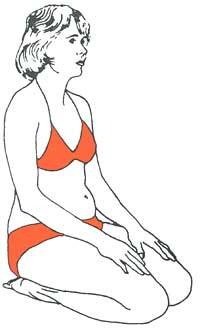
As has also been said with the body, work is done. But working with the body doesn't mean… breathing or getting unlocked and ready. Along with this it is very important to try to see what and why the patient is defended. It is a question that, at a given time, the patient realizes what is much more within him and, once he has realized, elaborate and mentally represent his personality as the next step. This elaboration occurs almost without realizing it.
SDG: Yes, somehow as a first step, would it be to realize, identify what happens and then elaborate it between patient and analyst, shape, symbolize?
M: M: That is. It is a very broad and complex world to express itself through words.
SDG: How is all this here and out?
M: M: Well, all this has behind an association called The International Institute for Bioenergetic Analysis (IIBA) (International Institute for Bioenergetic Analysis), located in New York. Founded by Lowen himself in 1956, there are currently around 50 associations spread all over the world, mainly in America and Europe. This central association is responsible for the formation of bioenergy analysts and this training is channelled through its affiliated associations. In Spain there are currently three associations: Catalonia, Madrid and Andalusia. I have the greatest link with those of Barcelona and in Euskal Herria we still have very few people. We are four people distributed in Pamplona, San Sebastián and Bilbao.
SDG: What training is necessary to be an analyst?
M: M: A minimum training of five years is required. Personal analysis, supervised therapeutic work, and reporting for two years are also requested. Finally, before two experts “trainers” (designated by the BED) a clinical case is presented in which he is awarded the title of analyst.
SDG: Can anyone do so or need any specific training to perform such training?
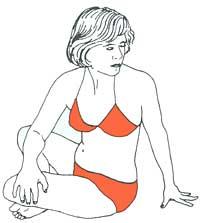
M: M: Each association has its own statutes, but today it is necessary to be licensed in something to initiate this formation. Normally, due to the characteristics of the training, it is the psychologists, doctors, nurses and the like who initiate this work.
SDG: How are the courses organized?
M: M: In this case, each association plays in its own way. For example, while Barcelona meets four days a month, in Madrid they meet two days.
SDG: And now what is your role in this world? Where are you?
M: M: Well, today I am in a phase of making all this known. It is a difficult job because we are very few, but we are full of illusion and over time we would like to create an association. And in addition to this informative work, we each work on our own.
And with this last question, after wishing luck to our interlocutor in his interesting work, we closed our conversation.

Gai honi buruzko eduki gehiago
Elhuyarrek garatutako teknologia





